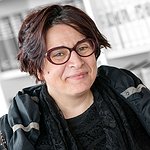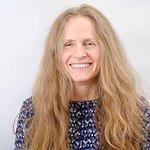
Focus Group 'Action'
The focus groups 'action' analyses the ways in which religions construct, organize and codify 'actions'— activities and measures, arrangements and engagements—that foster the rise and development of orientation schemes for the regulation of religious life. During the academic year 2016-2017, the group will particularly focus on the immanence/transcendence distinction within the ritual field. Ritual, indeed, is a fitting context when it comes to the analysis of the manner in which religions apply and stage ideas and modes of transcendence.
The previous work carried on at the Käte Hamburger Kolleg (especially the discussion on the senses in the academic year 2015-2016) has unveiled the sensory dimension of ritual, its linkages to the material sphere and its role as ordering instrument of the bodily world in the religious field. From the perspective of the overarching theme 'immanence and transcendence', the sensory interface of ritual is, however, only a first side of the coin. For ritual also involves ideas such as 'change', 'transformation', and above all 'passage'. Indeed, the notion of 'passage' has been at the core of the long discussion of the 20th century about the 'liminality' of ritual. The 'limen' or liminal zone within a given ceremony can be analysed as the switching key-point in the religious framing of the transcendence/immanence distinction. Accordingly, it will be the main focus during the academic year 2016-2017. In particular, two sets of questions will be formulated within the work of the group. The first set of questions shall be devoted to the framing of the analytical area and scrutinize which subfield of ritual is particularly rewarding when it comes to the immanence/transcendence distinction. The following questions shall be at the core:
- How does ritual bring into play the idea of 'passage' or 'limen' in different religious traditions? In particular, how is death ritually conceptualized in the different religions and at different moments in time?
- How does the sensory dimension of ritual relate (or points) to a sphere beyond the daily sensorial experience?
- What is the relationship between the ritual framing of the transcendence/immanence distinction and other ways of framing religious behavior (for instance, ethics)?
- What is the analytical relationship between the ritual framing of the transcendence/immanence distinction and other analytical fields such as, for instance, that of experience?
The second set of questions pertains to the analytical perspective of the Käte Hamburger Kolleg and deals with the ways in which intersocietal (religion and economy; religion and politics; religion and right; religion and art…) and intrareligious/interreligious contact shapes the ways in which a given tradition ritually codifies the distinction between immanence and transcendence. The following questions should be further discussed:
- Do situations of contact alter the ways in which a specific religious imagery brings into play the transcendence/immanence distinction in the field of ritual? Which ritual subfields are particularly affected and how do we register and describe these alterations?
- Does interreligious contact play a constitutive role in the shaping of the liminality of ritual?
- Does interreligious contact affect the ways in which a religion looks at the ritual framing of transcendence by triggering debates about the normative role of ritual compared to the normative role of other modes of action (for instance, ethics)?



